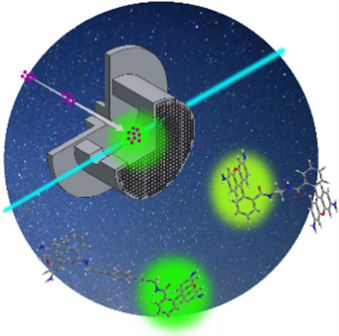Steen Brøndsted Nielsen has received 2.878.889kr from the Independent Research Fund Denmark
For the project "Fluorescence mass spectroscopy going cold: Energy transfer in “frozen” molecular ions" Steen Brøndsted Nielsen has received a grant



Mass spectrometry (MS) is used to weigh molecules and describe their composition, e.g. the sequence of amino acids in proteins.
In this project, we want to combine MS with fluorescence spectroscopy and elucidate the conformations or local structures of (bio)molecules based on FRET (Förster Resonance Energy Transfer). In FRET, the energy is transferred from one electronically excited dye (donor) to another (acceptor), a process that depends on the photophysics of each dye, their separation and orientation relative to each other. We will use a recently built and unique instrument, LUNA2 (LUminescence iNstrument in Aarhus 2), which enables experiments at cryogenic temperatures on "frozen" molecular ions. As the internal energy of the ions is small, they are not very flexible, which gives much sharper spectra than at room temperature, and which can therefore be interpreted using model calculations. Furthermore, conformers (specific geometric structures, see figure) can be selected based on the wavelength of the incoming laser light, - only the desired ions see the light and radiate.
We will investigate the photophysics of dyes in detail and the importance of individual water molecules or charges from e.g. charged amino acids for the energy transfer process. A full understanding of gas-phase FRET is necessary to spread the technique and make it a natural part of the large MS toolkit. In particular, FRET has huge potential in relation to "native" electrospray ionization, where the biologically relevant conformation is preserved in the transition from liquid to gas phase and will complement "ion-mobility" spectrometry, which provides global information about the shape of molecules.
